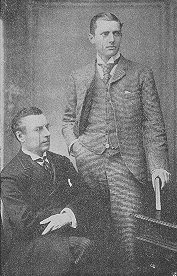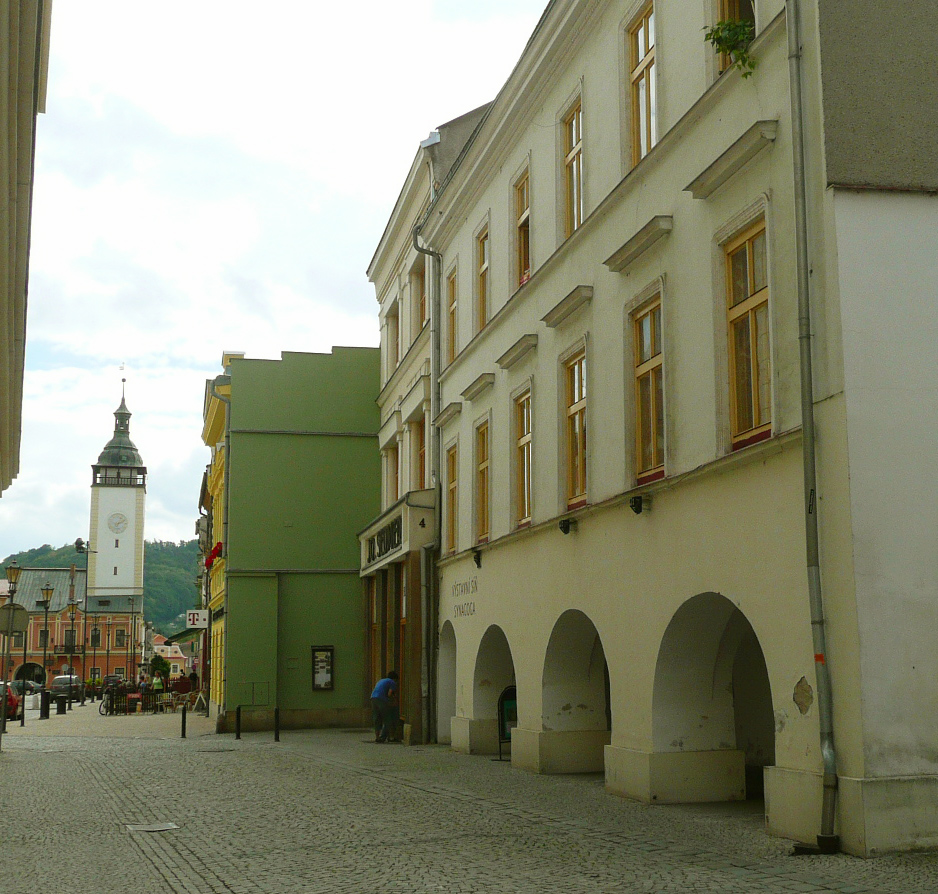|
Zdeněk Novák
Zdeněk Novák (April 2, 1891, Paskov, Frýdek-Místek District, Austria-Hungary, Austro-Hungarian Empire - October 23, 1988, Zadní Třebaň, Czechoslovakia) was a Czech Republic, Czech military officer who served in the Austro-Hungarian army, in the Czechoslovak Army, and as a resistance fighter in World War II. Early life and education Novák was born on April 2, 1891, in the village of Paskov. From September 1901 to June 1905 he attended the State Lower Gymnasium, Místek. From September 1905 to June 1907 he attended business school in Uherské Hradiště. From September 1908 to July 1909 he attended the State High School in Brno. From October 1909 to July 1910 he studied at the University of Agriculture in Berlin. In October 1910 he chose to interrupt his studies and volunteered for a year's service in artillery regiment 27 in Josefov, where he studied at a school for reserve artillery officers from December 1910 to May 1911. From May to September 1911, he was an artillery ... [...More Info...] [...Related Items...] OR: [Wikipedia] [Google] [Baidu] |
General
A general officer is an Officer (armed forces), officer of high rank in the army, armies, and in some nations' air force, air and space forces, marines or naval infantry. In some usages, the term "general officer" refers to a rank above colonel."general, adj. and n.". OED Online. March 2021. Oxford University Press. https://www.oed.com/view/Entry/77489?rskey=dCKrg4&result=1 (accessed May 11, 2021) The adjective ''general'' had been affixed to officer designations since the late medieval period to indicate relative superiority or an extended jurisdiction. French Revolutionary system Arab system Other variations Other nomenclatures for general officers include the titles and ranks: * Adjutant general * Commandant-General, Commandant-general * Inspector general * General-in-chief * General of the Air Force (USAF only) * General of the Armies, General of the Armies of the United States (of America), a title created for General John J. Pershing, and subsequently grante ... [...More Info...] [...Related Items...] OR: [Wikipedia] [Google] [Baidu] |
Košice
Košice is the largest city in eastern Slovakia. It is situated on the river Hornád at the eastern reaches of the Slovak Ore Mountains, near the border with Hungary. With a population of approximately 230,000, Košice is the second-largest city in Slovakia, after the capital Bratislava. Being the economic and cultural centre of eastern Slovakia, Košice is the seat of the Košice Region and Košice Self-governing Region, it belongs to the :sk:Košicko-prešovská aglomerácia, Košice-Prešov agglomeration, and is home to the Constitutional Court of Slovakia, Slovak Constitutional Court, three universities, various dioceses, and many museums, galleries, and theatres. In 2013, Košice was the European Capital of Culture, together with Marseille, France. Košice is an important industrial centre of Slovakia, and the U. S. Steel Košice, s.r.o., U.S. Steel Košice steel mill is the largest employer in the city. The town has extensive railway connections and an Košice Internationa ... [...More Info...] [...Related Items...] OR: [Wikipedia] [Google] [Baidu] |
Petschek Palace
The Petschek Palace ( or ''Pečkárna'') is a Neoclassicism, neoclassicist building in Prague. It was built between 1923 and 1929 by the architect Max Spielmann upon a request from the merchant banker Julius Petschek and was originally called "The Bank House Petschek and Co." (''Bankhaus Petschek & Co.'') Despite its historicizing look, the building was then a very modern one, being constructed of reinforced concrete and fully air-conditioned. It also had Pneumatic tube, tube post, phone switch-board, printing office, a paternoster lift (which is still functioning), and massive safes in the sublevel floor. The building was sold by the Petschek family before the German occupation of Czechoslovakia, occupation of Czechoslovakia, and the family left the country. It was during the Second World War, war years that the place gained its notoriety, as it immediately became the headquarters of Geheime Staatspolizei, Gestapo for the Protectorate of Bohemia and Moravia. It was here where t ... [...More Info...] [...Related Items...] OR: [Wikipedia] [Google] [Baidu] |
Gestapo
The (, ), Syllabic abbreviation, abbreviated Gestapo (), was the official secret police of Nazi Germany and in German-occupied Europe. The force was created by Hermann Göring in 1933 by combining the various political police agencies of Free State of Prussia, Prussia into one organisation. On 20 April 1934, oversight of the Gestapo passed to the head of the ''Schutzstaffel'' (SS), Heinrich Himmler, who was also appointed Chief of German Police by Hitler in 1936. Instead of being exclusively a Prussian state agency, the Gestapo became a national one as a sub-office of the (SiPo; Security Police). From 27 September 1939, it was administered by the Reich Security Main Office (RSHA). It became known as (Dept) 4 of the RSHA and was considered a sister organisation to the (SD; Security Service). The Gestapo committed widespread atrocities during its existence. The power of the Gestapo was used to focus upon political opponents, ideological dissenters (clergy and religious org ... [...More Info...] [...Related Items...] OR: [Wikipedia] [Google] [Baidu] |
Obrana Národa
Obrana národa (ON; English: ''Defence of the Nation'') was a Czech resistance organization that fought against the German occupation from 1939 to 1945. It opposed Nazi rule in the Protectorate of Bohemia and Moravia. The group was founded by General Josef Bílý in April 1939. The Gestapo was able to seek out and destroy the group's leadership on three occasions (February 1940, May 1942 and June 1944), but each time the group was reorganized. Overview of activities The formation of ON was the product of discussions among senior officers of the Army and Ministry of Defense that took place immediately after the Nazi occupation in March 1939. As early as March 19, some of the senior officers in the Czech army, including Gen. Sergej Ingr, Gen. Josef Bílý, and Gen. Sergei Wojciechowski, began talking about establishing a military resistance organization. At first, ON was relatively disorganized, but within a short time it had established itself in Bohemia and Moravia and had devel ... [...More Info...] [...Related Items...] OR: [Wikipedia] [Google] [Baidu] |
Sudetenland
The Sudetenland ( , ; Czech and ) is a German name for the northern, southern, and western areas of former Czechoslovakia which were inhabited primarily by Sudeten Germans. These German speakers had predominated in the border districts of Bohemia, Moravia, and Czech Silesia since the Middle Ages. The word "Sudetenland" did not come into being until the early part of the 20th century and did not come to prominence until almost two decades into the century, after World War I, when Austria-Hungary disintegrated and the Sudeten Germans found themselves living in the new country of Czechoslovakia. The ''Sudeten crisis'' of 1938 was provoked by the Pan-Germanist demands of Nazi Germany that the Sudetenland be annexed to Germany, which happened after the later Munich Agreement. Part of the borderland was invaded and annexed by Poland. Afterwards, the formerly unrecognized Sudetenland became an administrative division of Germany. When Czechoslovakia was reconstituted after World Wa ... [...More Info...] [...Related Items...] OR: [Wikipedia] [Google] [Baidu] |
Nazis
Nazism (), formally named National Socialism (NS; , ), is the far-right politics, far-right Totalitarianism, totalitarian socio-political ideology and practices associated with Adolf Hitler and the Nazi Party (NSDAP) in Germany. During Hitler's rise to power, it was frequently referred to as Hitler Fascism () and Hitlerism (). The term "neo-Nazism" is applied to other far-right groups with similar ideology, which formed after World War II, and after Nazi Germany collapsed. Nazism is a form of fascism, with disdain for liberal democracy and the parliamentary system. Its beliefs include support for dictatorship, fervent antisemitism, anti-communism, anti-Slavism, anti-Romani sentiment, scientific racism, white supremacy, Nordicism, social Darwinism, homophobia, ableism, and the use of eugenics. The ultranationalism of the Nazis originated in pan-Germanism and the ethno-nationalist ''Völkisch movement, Völkisch'' movement which had been a prominent aspect of German nationa ... [...More Info...] [...Related Items...] OR: [Wikipedia] [Google] [Baidu] |
Munich
Munich is the capital and most populous city of Bavaria, Germany. As of 30 November 2024, its population was 1,604,384, making it the third-largest city in Germany after Berlin and Hamburg. Munich is the largest city in Germany that is not a state of its own. It ranks as the 11th-largest city in the European Union. The metropolitan area has around 3 million inhabitants, and the broader Munich Metropolitan Region is home to about 6.2 million people. It is the List of EU metropolitan regions by GDP#2021 ranking of top four German metropolitan regions, third largest metropolitan region by GDP in the European Union. Munich is located on the river Isar north of the Alps. It is the seat of the Upper Bavaria, Upper Bavarian administrative region. With 4,500 people per km2, Munich is Germany's most densely populated municipality. It is also the second-largest city in the Bavarian language, Bavarian dialect area after Vienna. The first record of Munich dates to 1158. The city ha ... [...More Info...] [...Related Items...] OR: [Wikipedia] [Google] [Baidu] |
Neville Chamberlain
Arthur Neville Chamberlain (; 18 March 18699 November 1940) was a British politician who served as Prime Minister of the United Kingdom from May 1937 to May 1940 and Leader of the Conservative Party (UK), Leader of the Conservative Party from May 1937 to October 1940. He is best known for his foreign policy of appeasement, and in particular for his signing of the Munich Agreement on 30 September 1938, ceding the German-speaking Sudetenland region of Czechoslovakia to Nazi Germany led by Adolf Hitler. Following the invasion of Poland on 1 September 1939, which marked the beginning of World War II, Chamberlain announced the British declaration of war on Germany (1939), declaration of war on Germany two days later and led the United Kingdom through the Phoney War, first eight months of the war until his resignation as prime minister on 10 May 1940. After working in business and local government, and after a short spell as Director of National Service in 1916 and 1917, Chamberlain ... [...More Info...] [...Related Items...] OR: [Wikipedia] [Google] [Baidu] |
Hranice (Přerov District)
Hranice (; ) is a town in Přerov District in the Olomouc Region of the Czech Republic. It has about 18,000 inhabitants. The historic town centre is well preserved and is protected as an Cultural monument (Czech Republic)#Monument zones, urban monument zone. The town is known for the Hranice Abyss, the deepest flooded pit cave in the world. Administrative division Hranice consists of nine municipal parts (in brackets population according to the 2021 census): *Hranice I-Město (14,836) *Hranice II-Lhotka (91) *Hranice III-Velká (443) *Hranice IV-Drahotuše (1,514) *Hranice V-Rybáře (25) *Hranice VI-Valšovice (135) *Hranice VII-Slavíč (298) *Hranice VIII-Středolesí (71) *Hranice IX-Uhřínov (56) Středolesí and Uhřínov form an Enclave and exclave, exclave of the municipal territory. Etymology The name Hranice literally means "border". It is sometimes called ''Hranice na Moravě'' ("Hranice in Moravia") to distinguish from other places with the same name. Geography Hr ... [...More Info...] [...Related Items...] OR: [Wikipedia] [Google] [Baidu] |
Opava
Opava (; , ) is a city in the Moravian-Silesian Region of the Czech Republic. It has about 55,000 inhabitants. It lies on the Opava (river), Opava River. Opava is one of the historical centres of Silesia and was a historical capital of Czech Silesia. Administrative division Opava consists of eight Statutory city (Czech Republic)#Differences of statutory city, self-governing city parts in the suburbs and the central part that is directly administered. In addition, Opava consists of 14 municipal parts, whose borders do not respect the boundaries of the city parts (in brackets population according to the 2021 census): *undivided Opava **Město (3,485) **''Předměstí (22,212)'' **Kateřinky (12,795) **Kylešovice (7,311) **''Jaktař (2,182)'' *Komárov (1,323) **Komárov (1,323) *Malé Hoštice (1,710) **Malé Hoštice (1,710) *Milostovice (305) **Milostovice (305) *Podvihov (754) **Komárovské Chaloupky (155) **Podvihov (599) *Suché Lazce (1,034) **Suché Lazce (1,034) *Vávrov ... [...More Info...] [...Related Items...] OR: [Wikipedia] [Google] [Baidu] |






